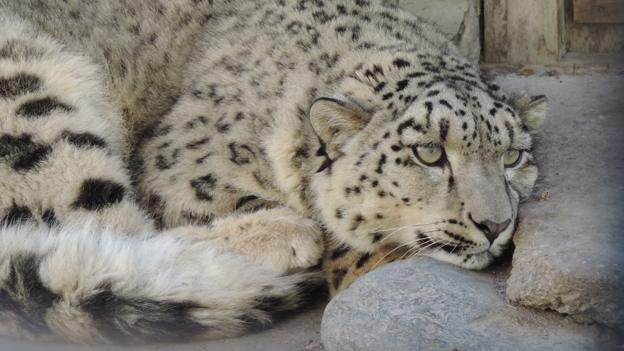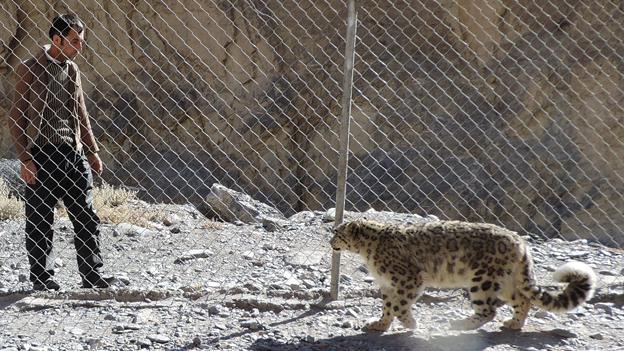Pakistan snow leopard to have new home
- Published

The snow leopard has spent two years in a cage by the side of a road
A snow leopard rescued by locals in northern Pakistan two years ago will be moved to a specially designed wildlife care facility next June, officials say.
For the past two years it has been living in a cage by the side of a road.
The local government ordered the animal to be moved after experts concluded it was not fit to be released in the wild.
Snow leopards are native to mountain regions of central and South Asia, but fewer than 6,000 are thought to be left in the wild.
Earlier this year, the government turned down a request by a Swedish zoo to adopt the snow leopard, saying it wanted to keep it to raise awareness about wildlife in Pakistan.
The regional government of Gilgit-Baltistan, a semi-autonomous province in Pakistan's extreme north, approved a site plan for the wildlife facility in November, and construction will begin in January.

The leopard was a 2kg cub when it was found
The facility is being funded by the United States embassy in Pakistan.
'Yak meat'
The snow leopard, a female, was rescued on 31 December 2012 from a partly frozen river stream in the Wadkhun area of Sost, the last town on the Pakistan-China border in the Karakoram mountain range.
Pervez Iqbal, a game watcher from the Department of Parks and Wildlife who rescued the cub, told the BBC it weighed just over 4kg at the time.
It now weighs between 28kg and 30kg - the standard weight of an adolescent female.
"Initially we fed her milk with a feeder, and then switched to chicken, but it now consumes 3kg of yak meat in a day," Mr Iqbal said.
Local charity the Snow Leopard Foundation (SLF) is designing the new enclosure in partnership with international donors.
It is being built over 11,000 square feet in the mountainous Naltar region of Gilgit-Baltistan.
"We want to build a large enclosure which will be designed to keep human intervention at a minimum and allow the snow leopard to live in stress-free conditions," said Dr Ali Nawaz, head of the SLF.
Dr Nawaz said the animal had been in contact with humans for too long for it to be released into the wild.
"It was separated from her mother at an age when it learns to hunt and undergoes muscular build-up that helps it survive in the wild later," he said.
Another snow leopard cub, a male nicknamed Leo, was rescued by a farmer in the same region in 2006.
It was later donated by the Pakistani government to the Bronx Zoo in New York.